The days of the "set it and forget it" fantasy pitching staff are a distant memory. In 2024, a fantasy manager must be as mindful as ever scrutinizing individual pitching matchups, monitoring trends, examining new or adjusted pitch repertoires, and being prepared to pounce the instance a pitching opportunity presents itself either via trade or the waiver wire.
The past three seasons, after all, represented the three seasons (excluding the abbreviated 1981, 1994 and 2020 campaigns) with the fewest number of 200 IP and 162 IP (the traditional benchmark for ERA qualification) pitchers, as well as the three with the fewest 100-pitch outings in the 36 seasons in which detailed game pitch counts are readily available. As baseball teams continue to cycle arms while leaning heavily upon pitching matchups, we must follow suit.
This quest is far from easy, and it's why fantasy managers require much guidance to successfully steer them toward these sporadically appearing pitching gems -- shall we liken it to an often-maddening game of whack-a-mole?
That's where this column comes in. My favorite method of unearthing pitching value is to isolate pitchers who possess potentially elite skill sets, but whose surface statistics (think: the "back of the baseball card" stats like wins and ERA) belie their true talent. They are my annual "Kings of Command," pitchers who met a specific set of statistical baselines indicating excellence with these skills.
Kings of Command baseline numbers
Pitchers who qualify for inclusion exceeded the MLB averages listed below in all of the following categories during the 2023 season. Starting pitchers must have faced at least 200 batters, and relief pitchers must have faced at least 100 batters, while serving in those specific roles.
Starting pitchers:
Swinging-strike rate (SwStrk%): 11.9% or more
First-pitch strike rate (1stPStrk%): 62.0% or more
Command rate (K's per walk, or K/BB): 2.80 or more
Relief pitchers:
Swinging-strike rate (SwStrk%): 12.7% or more
First-pitch strike rate (1stPStrk%): 60.6% of more
Command rate (K's per walk, or K/BB): 2.47 or more
Put-away rate (K's per 2-strike count): 43.2% or more
Using those thresholds, 86 pitchers (42 starters and 44 relievers) met all of those criteria in either role. Among them were AL Cy Young Award winner Gerrit Cole and six of the pitchers responsible for 353 of the 510 total vote points (69%) in that award's balloting, nine of the top 14 starting pitchers in terms of fantasy points, and five of the top six starters on the ESPN Player Rater.
The following nine names, however -- none of whom were anywhere near as ballyhooed as Cole, Spencer Strider, Zac Gallen or their ilk -- also qualified. That's not to say any possess equal ability to those three fantasy stalwarts, but their skills were indubitably under-appreciated last season, making each a prospective bargain in fantasy drafts entering 2024. Simply a minor tweak or adjustment to a specific pitch, the pitcher's delivery or stance on the rubber, greater luck on batted balls, or even a new or expanded opportunity with his team, could provide a breakthrough path.
Let's examine what it might take for each to emerge. My "Kings of Command" are listed in alphabetical order, along with their 2023 Player Rater finishes and fantasy point totals using ESPN's standard scoring.
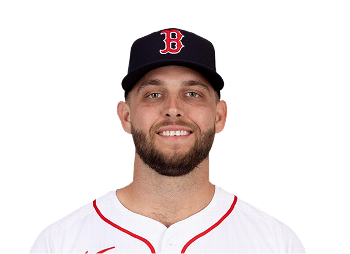
Kutter Crawford, Boston Red Sox
2023 Player Rater: SP56/No. 252 overall
2023 fantasy point total: 264 (SP59)
Why he's on here: Crawford was the only pitcher to deliver a top-200 fantasy point total despite failing to win eight games, amass 150 innings or strike out 150 batters while registering an ERA greater than 4.00. This made him one of the game's most quietly productive pitchers. He possesses one of the game's highest-spin fastballs -- the scientifically untruthful "rising" fastball -- akin to the more renowned such offerings thrown by Nestor Cortes, Cristian Javier and Spencer Strider. Plus, the addition of a sweeper last year (a 5 Statcast Run Value) only helped deepen an already ample repertoire.
How he could improve: Continued creativity, such as his continued experimentation with a splitter this spring, will only help deepen his repertoire. That could manifest as more whiffs or more ground balls, either of which would go a long way toward Crawford putting up eye-popping rotisserie numbers. Like Garrett (see below), he'd also be helped by greater trust from his team in terms of workload (77.5 pitches per start).
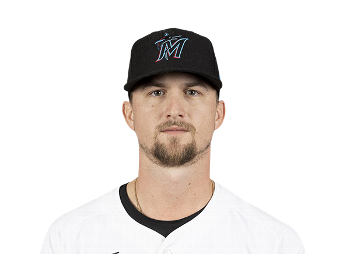
Braxton Garrett, Miami Marlins
2023 Player Rater: SP40/No. 163 overall
2023 fantasy point total: 326 (SP34)
Why he's on here: Though overshadowed by his four rotation mates, each of whom throws considerably harder (at least 5 mph faster at that), Garrett wound up outscoring all but Jesus Luzardo in fantasy points last season -- and he was only 59 points behind the left-hander's total. Garrett's control took a huge step forward, his 4.4% walk rate the league's fifth-best among pitchers with 20-plus starts (as well as by far his pro-career best), in large part due to the addition of a cutter, which was his second best-performing pitch (a 7 Statcast Run Value) behind his slider.
How he could improve: Garrett's repertoire has historically struggled to rein in hard contact from right-handed batters (career 90.1 average exit velocity, 43.3% hard-hit rate allowed). The cutter helped, but reports that he's considering leaning more on his changeup offers a prospective path to growth. It would also help if the Marlins afforded him more than the 81.1 pitches he averaged per start; that was fourth-most among the team's regular starters and only barely more than Eury Perez (80.7).
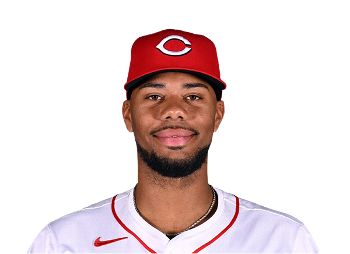
Hunter Greene, Cincinnati Reds
2023 Player Rater: SP138/No. 583 overall
2023 fantasy point total: 203 (SP100)
Why he's on here: The lone holdover from last year's list, Greene possesses the filthiest raw stuff among this year's group, between a fastball that has paced all starters in average velocity over the past two seasons (minimum 25 starts) and a slider that generated the seventh-most strikeouts. He has shown us glimpses of his prospective greatness already, between the 7⅓ no-hit innings he threw in a combined no-hitter loss to the Pittsburgh Pirates in May 2022, and the six 11-K, no-hit innings he threw against the Chicago Cubs last May. Greene's control has wavered from start to start over his two MLB seasons, however, which is why it's interesting that even accounting for that, he still met the requisite qualifications.
How he could improve: Greater control of his primary pitches, particularly his fastball, would be the obvious answer. Greene is reportedly dabbling with both a curveball and splitter this spring, pitches that could help diversify his repertoire and make it tougher for hitters to sit on his fastball. That makes him a pitcher whose progress should be closely tracked this spring.

Sean Manaea, New York Mets
2023 Player Rater: SP77/No. 329 overall
2023 fantasy point total: 232 (SP78)
Why he's on here: After Manaea spent the 2022-23 offseason training with Driveline, a well-known, data driven baseball performance program, reports swirled that his four-seam fastball (until then a 91.5 mph average pitch) had topped 97 mph, making him a trendy bounce-back pick. One might have thought he'd belong in this space then, but not necessarily now. Unfortunately, the breakout never materialized, as the San Francisco Giants shuffled him between the rotation, bulk relief and lefty specialist roles all year, though his fastball did average a career-high 93.6 mph.
How he could improve: Manaea did finish 2023 on a high note, posting a 2.25 ERA over four season-ending starts in which increased reliance on his changeup contributed and which included a brilliant season finale (6 IP, 2 ER, 8 K) in which his fastball averaged 93.7 mph. He's now with a Mets team virtually certain to promise him a full-season rotation role, which provides a prospective rebound path.
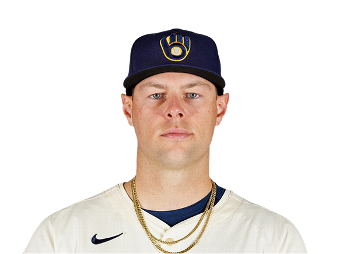
Trevor Megill, Milwaukee Brewers
2023 Player Rater: RP217/No. 618 overall
2023 fantasy point total: 91 (RP206)
Why he's on here: A deep sleeper on the relief side, Megill was an absolute sensation for the Brewers over the season's final seven weeks and in his one wild-card appearance, posting a 2.00 ERA and 31 strikeouts over 16 outings. To think, he was trending toward "minor league journeyman" status weeks earlier, but after making a slight tweak to his arm path while with Triple-A Nashville around midsummer, his four-seam fastball spiked at a 99.7 mph average while his curveball generated a whiff two-thirds of the time that hitters swung at it. The change might well place Megill firmly in the eighth-inning role to begin 2024.
How he could improve: Considering the rumors surrounding a prospective Devin Williams trade, Megill is not only an interesting sleeper for the holds category, but also a potential closer if such a deal happens. Megill might only need the Brewers to confidently slot him into the primary setup role to take a huge, Yennier Cano-in-2023 caliber fantasy breakthrough.
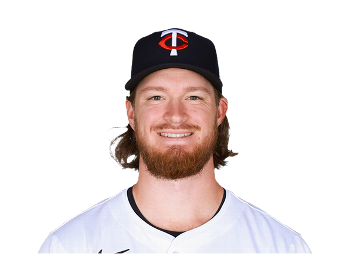
Bailey Ober, Minnesota Twins
2023 Player Rater: SP34/No. 143 overall
2023 fantasy point total: 319 (SP36)
Why he's on here: An imposing, 6-foot-9 figure on the mound who possesses some of the sharpest control in baseball -- his 5.0% walk rate since the date of his MLB debut is seventh-best among pitchers with at least 50 starts -- Ober broke through with a beneath-the-radar excellent 2023 that earned him a start in the opening game of Minnesota's ALDS against the Houston Astros. Though none of his surface stats were eye-popping, he snuck his way into universal top-40 fantasy starter status, driven in large part by his advances with the changeup, which he increased to 28% usage and which Statcast valued at eight runs above average.
How he could improve: Frankly, continued big league experience might be all he needs, since Ober hasn't yet occupied a regular role in the Twins rotation in any single year, and at times his command of his changeup and slider seemed to waver. He threw 167 innings between Triple-A St. Paul and the majors last season, so a step forward to full-time status and production is a reasonable projection.
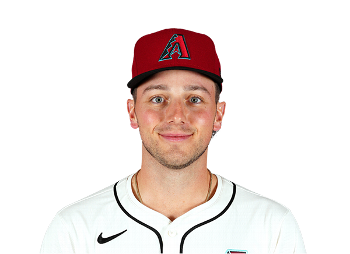
Brandon Pfaadt, Arizona Diamondbacks
2023 Player Rater: SP215/No. 880 overall
2023 fantasy point total: 113 (SP157)
Why he's on here: Kiley McDaniel's No. 8 pitching, and No. 32 overall, prospect entering last season, Pfaadt earned his first look in the Diamondbacks rotation in May, but was hammered to the tune of a 9.82 and nine home runs over his first six starts. After returning to Triple-A Reno, he made an adjustment to his stance on the pitching rubber and was much more productive thereafter, posting a 4.00 ERA, 1.20 WHIP and 4.71 K/BB ratio in 17 starts and one relief appearance, which included a stellar showing during the postseason (3.27 ERA in five starts).
How he could improve: Better command of his changeup, one of the league's worst-performing (minus-8 Statcast Run Value) despite it being advertised as a potentially plus offering as he was climbing the minor league ladder, might be the most obvious way, but further polishing the sinker he used during his season-ending stint in the rotation would also go a long way toward deepening his repertoire.
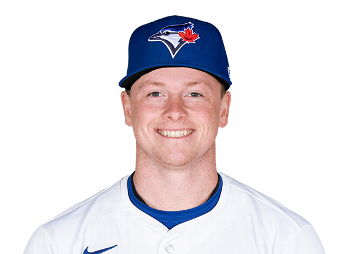
Louie Varland, Minnesota Twins
2023 Player Rater: SP128/No. 538 overall
2023 fantasy point total: 128 (SP145)
Why he's on here: Given a seven-week opportunity in the Twins rotation last May/June, Varland put up encouraging command-oriented numbers (70% first pitch strike and 3.38 K/BB rates), but was ultimately undone by the longball and shipped back to Triple-A St. Paul. Upon his return, Varland was excellent in a multi-inning relief role in September and the postseason, posting a 1.42 ERA over nine appearances while striking out 39.1% of the batters he faced. Most notably, his average fastball velocity spiked to 97.4 mph in relief, giving him a prospective path to fantasy relevance whether he's a starter or reliever in 2024.
How he could improve: With Jhoan Duran entrenched as the Twins' closer and the team rich in short-inning relievers, a rotational role best suits Varland for fantasy purposes. Varland has been reportedly dabbling with a sinker this spring, but more importantly, his four-seam fastball has already averaged 95.8 mph through two Grapefruit League outings -- a full tick higher than where he was last May/June.
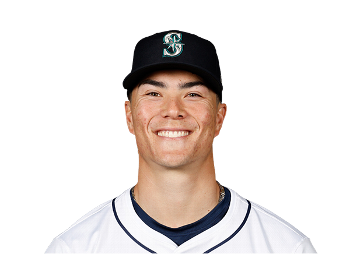
Bryan Woo, Seattle Mariners
2023 Player Rater: SP110/No. 468 overall
2023 fantasy point total: 166 (SP117)
Why he's on here: Yet another fastball wizard developed by the Mariners organization, following the previously promoted George Kirby, Logan Gilbert and Bryce Miller, all of whom have excellent heaters of their own, Woo went from sixth-round draftee two months removed from April 2021 Tommy John surgery to member of the Seattle rotation despite only 25 starts total minor league experience. In the process, Woo put forth the best Statcast expected ERA (3.48) of the quartet, finishing the season with three outings of at least five shutout frames over his final six.
How he could improve: Maintaining the late-season performance of his cutter, which generated a 34% whiff rate while allowing a .194 batting average over his final seven starts, and sinker (which held opponents to a .212 BAA alongside a 78% ground ball rate over that same time) might be all he needs to truly break through. Woo threw 131 2/3 innings in his first full season back from surgery. Can he push 160-plus while maintaining similar or greater effectiveness?
Additional bargains to consider
Cristopher Sanchez showed elite control and ground-ball ability last season and should be a regular member of the Phillies' rotation.
Garrett Whitlock has elite control and a nasty sweeper, and prospective paths to fantasy relevance with the Red Sox as either a starter or late-inning reliever.
Julian Merryweather will probably begin 2024 third in the pecking order in the Cubs bullpen, but he has a filthy slider that had a 45% whiff rate last season and would be a fine option to close -- and a strong source of holds for fantasy otherwise -- if the team requires it.
